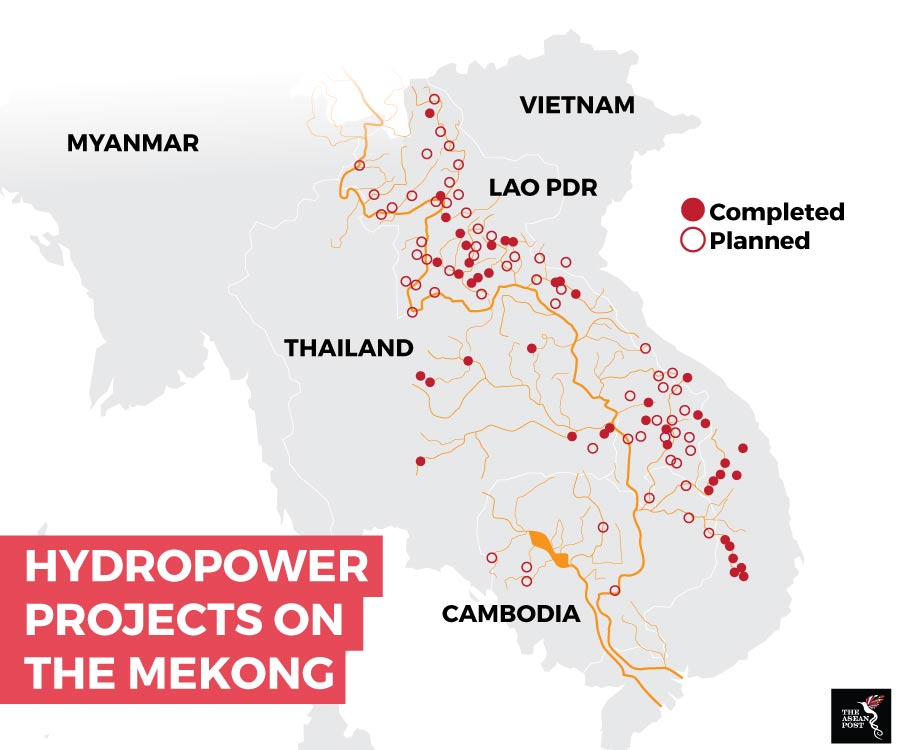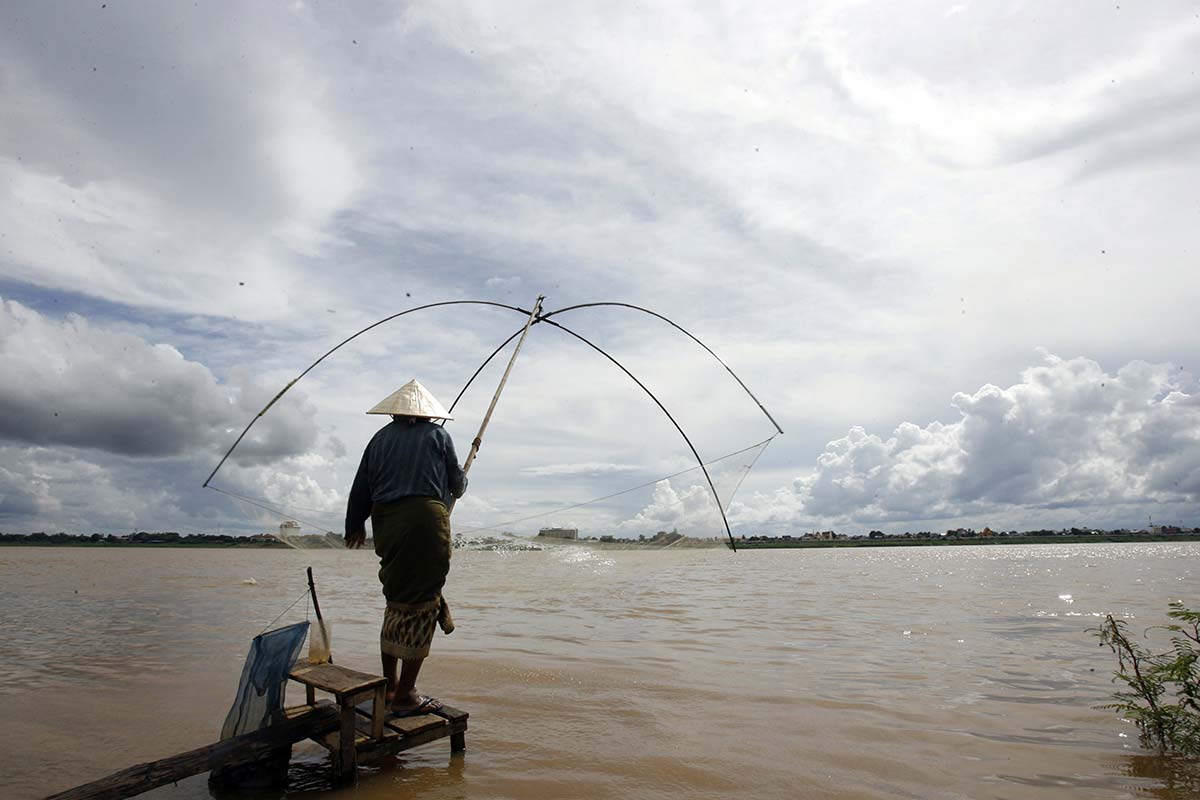In serving as the "Battery of Asia" to its power-hungry neighbours, Lao PDR is cramming dozens of dams onto its network of rivers. With 46 currently operating hydropower plants with a capacity of 6,400 megawatt (MW), and another 54 under construction and set to start operating by 2020, Lao PDR targets the generation of a whopping 28,000 MW of power in just two years.
Many of these controversial dams are being built at breakneck speed, leaving local communities with neither avenue to air their disputes, nor revenue from power export income or compensation from compulsory resettlement to make way for the dams. In some cases, rivers and its water have been diverted away from communities, leaving farmer with destroyed farmland and fishers with smaller catches. The Mekong River Commission, in April, predicted that up to 40 percent of fish species in the basin could be disrupted by the dam-building

Source: Various sources.
The situation is critical for the Sekong River Basin, one of the most important Mekong tributaries. According to the river and community rights protection organisation, Rivers International, up to 17 dams are planned in the basin, three of which are already under construction. The only large dam in full operation on Lao PDR’s side of the basin, the Houay Ho Dam, was completed at the end of 1998 and has proven to be disastrous for the resettled ethnic minority villagers. Now, eight dams that are part of the Lao-Vietnam transmission line project are moving forward. Even with the little information trickling out to the public, the planned dams are predicted to cause a sharp decline in fisheries, affecting local livelihoods significantly.
The Sekong tributary contributes 10 percent of the water flowing in the Mekong River. In Lao, tens of thousands of people from at least 20 different ethnic groups benefit from the river, most of whom are highly dependent on local natural resources and services provided by the river. The basin also supports a wide diversity of mammal, reptile and bird species of global significance, including the Asian elephant, tigers, gibbons, Asiatic Black and Sun Bears, the Siamese crocodile, king cobra, cranes, ibis and endangered hornbills.
Ensuring hydropower projects benefit all
Towards safeguarding local communities, ecosystems and wildlife surrounding the river basin, the World Bank Group member, IFC, is working with the government of Lao on a basin-wide Cumulative Impact Assessment (CIA) of renewable energy development in the Sekong River Basin. The first of its kind, the CIA will follow the newly developed draft ‘Guidelines for Hydropower Projects in Lao PDR’. To be undertaken over the next nine months, the CIA will result in evidence-based recommendations for a variety of sustainable scenarios for the development. In a statement, the IFC stressed the need and timeliness of the CIA as the Sekong river is one of the last few remaining major Mekong tributaries with high biodiversity value and few hydropower projects in operation.
Rivers International’s Executive Director, Kate Horner, in her reflections on ‘World Water Week 2018: Water, Ecosystems and Human Development’ said that basin-scale planning is now well understood to be a best practice. However, projects are often proposed in isolation.
“Dam projects that do not emerge from a comprehensive basin assessment, and cumulative assessment, cannot claim to be sustainable. The cumulative impacts across a basin are simply too great. What gives hope this time around is the fact that the financiers of the infrastructure are standing up against funding projects that do not commit to basic good practice standards. Financiers need to be vocal in calling out sub-standard projects if they are to avoid significant financial risk and maintain credibility, and if they want to avoid sub-standard high impact, high risk projects,” said Horner.
Hydropower energy is the world's largest source of renewable power that is used for electricity generation. But for the Mekong river basin, concerns remain on whether the river network will be able to cope with the sheer number of dams plotted along its course. Also, a key concern is the impact these dams will have on local communities, ecosystems and biodiversity. The Sekong river’s CIA will set the path towards better managing these concerns and impacts.
Related articles:
Hydropower dam collapses in Lao
